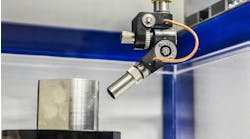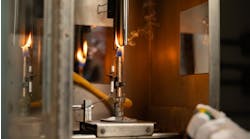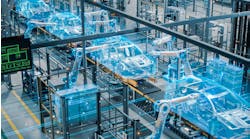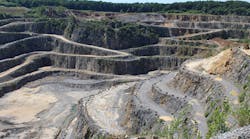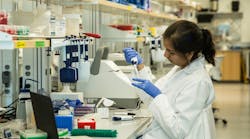Animation Demonstrates Eriez StackCell Flotation Technology
An animation produced by Eriez Flotation enables the visualization of its cutting-edge StackCell Flotation Technology. It describes how the machine de-couples bubble-particle attachment and froth phase recovery, which allows the industry to minimize the footprint of an industrial flotation plant, including size, foundation loadings, and power consumption. This device is a step forward in the industry's drive to extract minerals more sustainably.
As described in the animation, the StackCell design takes advantage of a patented independent contacting chamber. Feed slurry and air enter this chamber and are subjected to intense shear to generate bubbles and turbulent kinetic energy dissipation rates to promote contact with the hydrophobic species. Particle collection is achieved in this section and the bubble-particle matrix is subsequently discharged into a quiescent phase separation chamber.
Global Managing Director of Eriez Flotation Eric Wasmund says, “Innovation in traditional flotation technology is heavily focused on economies of scale to reduce capital costs. The technical basis for this argument is to maintain residence time and minimize the number of cells by increasing cell volume. However, this approach ignores fundamental flotation principles which resulted in decreased bubble-particle contact probabilities, reduced froth recoveries due to increased froth travel distances and particle detachment as well as unnecessary mixing within the cells.”
According to Wasmund, “One of Eriez Flotation’s foremost objectives in creating this animation is to shine a light on what makes StackCell Flotation machines superior to conventional flotation methods, creating the basis for a more efficient unit operation and therefore smaller size for the same application.”
The animation illustrates the purpose of the collection and separation chamber, offering viewers an overview of the physical attributes of each and the benefits of a de-coupled flotation system. The importance of froth-pulp separation and the effective use of wash water to improve concentrate grade is explained, as are the benefits of an internal dart system.
“Eriez based the StackCell technology on flotation-first principals,” says StackCell Global Product Manager Asa Weber. “Understanding and evaluating the relationship between hydrophobicity, particle size, turbulent kinetic dissipation rate, gangue entrainment, and froth-pulp phase separation led to the development of StackCell in the early 2000s,” he explains.
